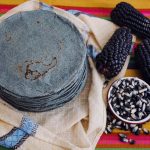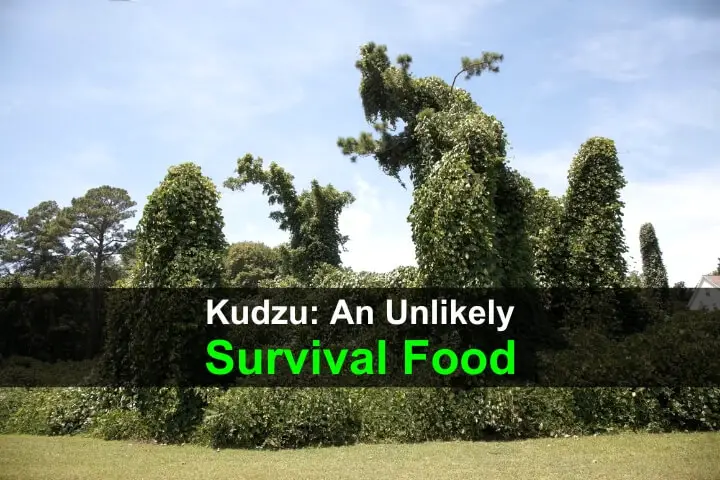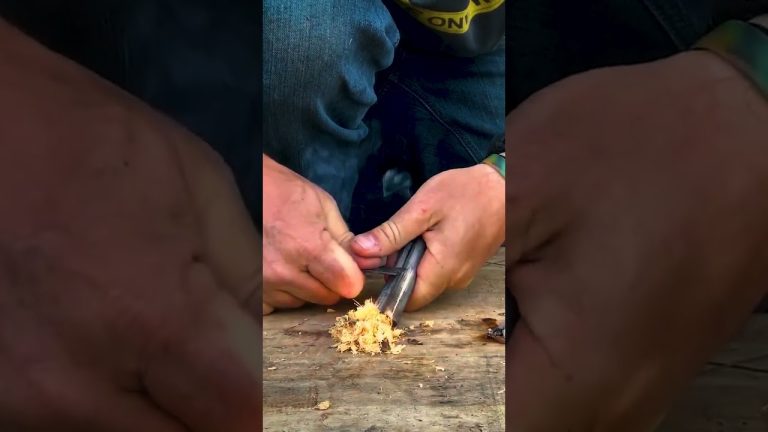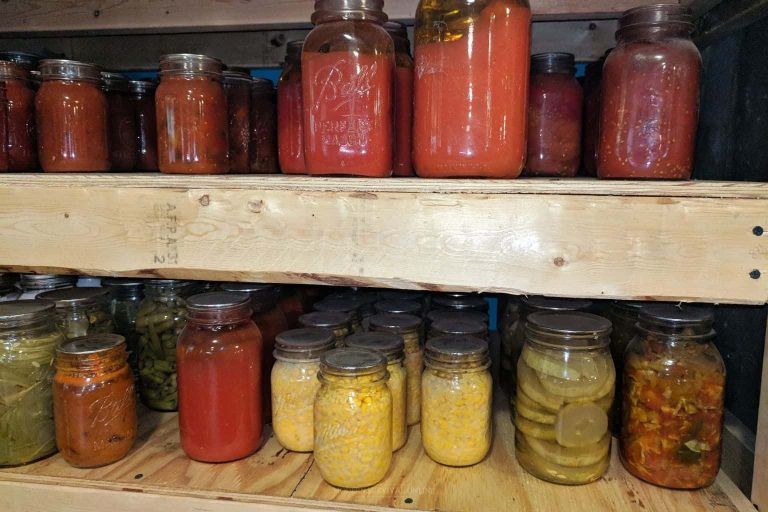Estimated reading time: 6 minutes
Kudzu is an unlikely source to turn to when the grocery stores are shuttered or the shelves empty. Normally, kudzu is seen as an obnoxious vining plant that will quickly take over a backyard, fence and even buildings.
People lovingly refer to it as the vine that ate the south because it is such a quick spreader. But before you get crazy with the potent weed control chemicals or clippers, wait! That vine also has some benefits that could just save your life in a survival situation.
Want to save this post for later? Click Here to Pin It On Pinterest!
Where Kudzu Grows
Kudzu thrives in hot, humid climates. It loves deep loamy soils. The southeast provides the perfect growing environment for kudzu, which is why it quickly grew out of control. Although it loves the southeast, the plant has shown it can adapt to other conditions and has been found in the Pacific Northwest as well as Iowa and Nebraska.
History of Kudzu
It was supposed to be an ornamental plant brought over from east Asia, but people quickly found out it wasn’t something that could be ignored once planted. It was first brought over in the eighteen seventies as part of a Japanese exhibition, but it was destroyed because someone knew it was one of those things that could quickly get out of control.
Then it came back and this time, they weren’t about to toss out the seeds because they wanted it. They cultivated kudzu. It was pretty and provided a nice, fluffy green appearance that required no upkeep. People used it to shade porches and courtyards in the hot and humid southeast. The kudzu seemed liked a quick, easy way to provide some much-needed protection from the heat of summer. Remember, they didn’t have AC.
Then in the 1930s, they figured out it was a good option to prevent soil erosion. Farming practices in the south were destroying the land. They planted kudzu because it added nitrogen to the soil and kept their farmland from eroding away.
Unfortunately, the kudzu grew wild and quickly overtook the farmland and throughout. By the fifties, it had gone wild. Farmers were no longer using it as a cover crop and had all but given up.
By the 70s, it was officially a weed and in 1997, it was placed on the Federal Noxious Weed List. It has since been removed, but thirteen states consider it a noxious weed and actively fight the growth.

Eating Kudzu
The good news about this noxious weed is you can eat it. So yes, it’s an annoyance for landscapers and farmers, but it is a source of food. Given the fact it’s so prolific and hard to kill, that’s a good thing when you’re hungry. Kudzu root has some protein and is high in carbohydrates.
Before you start harvesting kudzu, it’s imperative you know exactly what it looks like. It has a very similar appearance to poison ivy. Obviously, you don’t want to eat poison ivy.
You can safely eat the following parts of the kudzu plant.
- Kudzu leaves
- Vine tips
- Roots
- Purple blossoms
Do NOT eat the seeds and pods.
- Leaves – Pick young leaves that are devoid of bug infestation. You can eat them raw or sauté them. Toss them in a salad or add to a stir-fry.
- Flowers – Pick flowers between July and September. You’ll need to cut them to avoid crushing them during harvest. The flowers can be used to make jelly, tea or even wine.
- Roots – Dig up the roots and wash thoroughly. Peel them like you would a potato. You can fry, shred or roast the roots. The roots can also be dried and ground into a fine powder.
You’ll find some kudzu recipes here.
Medicinal Uses of Kudzu
Due to its origins, kudzu has been a staple in traditional Chinese medicine. You can buy powdered kudzu or capsules if you don’t have access to fresh kudzu.
Kudzu Root
- Lowers cholesterol
- Reduces high blood pressure
- Balances blood sugar and insulin levels
- Ease menopause symptoms
- Reduces inflammation
- Improve digestive health
Kudzu Flower Tea
- A tea made with flowers is used to reduce hangover symptoms
- The tea is also used to reduce the amount of alcohol someone drinks, which is supposed to help combat over-imbibing
- Curing headaches and migraines
- Reducing fever
- Managing allergies

Other Uses of Kudzu
Kudzu has got a pretty bad reputation because it is so prolific and eats up anything in it’s path, but when properly controlled, it can be beneficial. There are some other uses for kudzu that might make you think twice before you get rid of it.
Livestock Feed
Everyone knows the price of feed has skyrocketed. Cattle, goats and sheep would love to feast on kudzu. It is nutritional and there are studies currently being done to measure the effect on milk production and meat quality in cattle dining on kudzu.
This is an inexpensive food option and as we’ve discussed, it grows rapidly which could be a huge help for ranchers. In fact, it’s believed kudzu can grow up to a foot per day.
Erosion Control
We mentioned this was the initial reason it was planted and it still has a valid use in areas that are prone to soil erosion. Slopes and embankments that might be in danger of mudslides or just slipping away in general can benefit from the extensive root system that gives stability to those areas. It can be managed to prevent it from taking over.
Cover Crop
Again, this was one of the original intended uses for the introduction of kudzu. It infuses the soil with nitrogen. Fields that are constantly planted and harvested are sucked dry of the nutrients.
Farmers use cover crops to naturally feed the soil and make is usable again. The key is managing the kudzu and then completely removing it from the field after a year or two. Also, kudzu naturally pulls lead from soil if you’re in an area that has high lead or heavy metal levels.
Survival Uses
Now this is what you really want to know! Kudzu will feed you, heal you and it will also help keep you alive and thriving.
- The vines can be used to make cordage. This is a bit of a process and you’ll want to read up on how to make fiber from the vines.
- Honey production. This is one of those things that beekeepers will argue about, but some believe the purple flowers on the kudzu plant produce purple honey, which is exclusive to the southeast.
- If you have an abundance of food and don’t need to eat kudzu roots, you can burn the dried kudzu roots.
- The vines can be used to weave mats, baskets, and even shoes.
Like this post? Don’t Forget to Pin It On Pinterest!
You May Also Like:

















